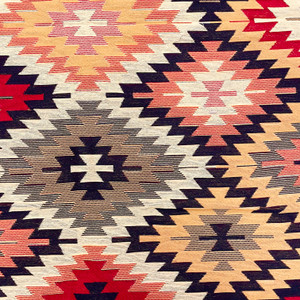The History of Turkish Rugs (and Why Your Home Needs One)
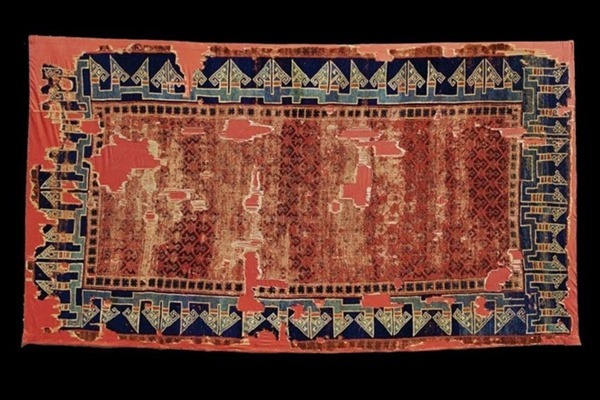
SOURCE: Nazmiyal Antique Rugs
The history of Turkish rugs predates the current nation of Turkey by almost 1,000 years. They can trace their origins back to the Seljuk Empire, which ruled Anatolia from the 11th century AD. The Seljuks used them as floor and wall coverings and to hang over doorways during the winter to prevent cold drafts. Seljuk carpeting was characterized by its use of intense color and geometric patterning.
Beginning in the 13 th century, the Ottoman Empire arose and ultimately defeated the Seljuks. While they made significant administrative changes to how the empire was governed, they kept many Seljuk traditions, including weaving intricate, durable floor coverings. The Ottomans, however, added their twist to the tradition by incorporating lavish designs that make them easily distinguishable from their Seljuk predecessors.
The Ottoman Influence
The Ottoman Empire, which rose to power in the late 13 th century, played a significant role in the history of the Turkish rug. The Ottomans were known for their opulent and lavish designs, and their floor textiles are some of the most sought-after in the world. In time, however, a new nation would adopt and expand the Ottoman rug-making tradition.
By the late nineteenth century, the Ottoman Empire was racked by upheaval. The Sultan was deposed, and the military took command just after the turn of the twentieth century. In World War I, military leaders sided with the Germans and were ultimately defeated by the Allied forces, who occupied much of the empire's former territory. Ultimately, they too would be ousted, and the secular nation of Turkey (named after resistance leader Kemal Atatürk, whose last name, given to him by the national assembly, means "father of the Turks") was born.
Modern Turkish Rugs
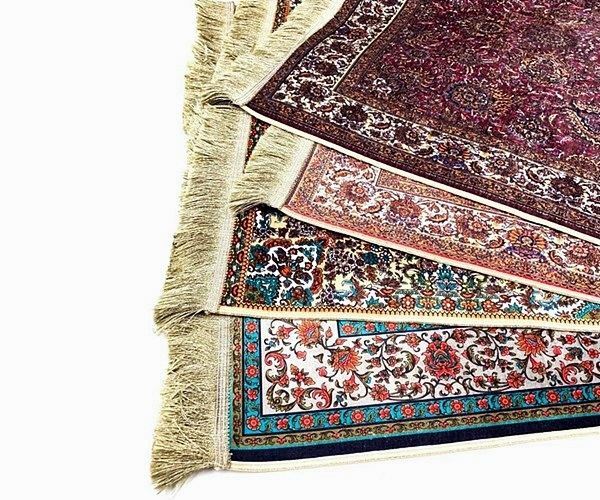
The Turks inevitably developed their brand of Turkish textiles and added their unique spin to what was now called "Turkish rugs." Contemporary examples often sport more whimsical designs than their Ottoman or Seljuk predecessors. And while traditional geometric features are still quite popular, modern Turkish geometric patterns often resemble contemporary non-figurative artwork.
Different Kinds of Turkish Carpeting
Most every rug produced in Turkey today falls into one of several recognized design categories. Its distinctive patterns and designs typify each. Let's explore several notable types of Turkish carpeting and their unique backgrounds.

SOURCE: Hali.com
Anatolians
Anatolian carpets, also known as Turkish carpets, are perhaps the most iconic and widely recognized type of Turkish carpeting. Originating from the Anatolian region of Turkey, these carpets boast a rich history dating back centuries.
Anatolian carpets are characterized by their intricate designs, vibrant colors, and superior craftsmanship. They often feature geometric patterns, floral motifs, and elaborate borders, reflecting the Anatolian people's cultural diversity and artistic heritage. These carpets are handwoven using traditional techniques passed down through generations, with each region within Anatolia producing its unique styles and designs.
Bukharas
Bukharas, also known as Bokharas or Bokhara rugs, are hand-knotted carpets that originated in Central Asia and are produced in Turkey. These carpets are characterized by their distinctive patterns of repeated octagonal or diamond-shaped motifs known as "guls" - arranged in rows on a solid-colored background.
Bukharas are traditionally made using high-quality wool and dyed using natural dyes, resulting in rich, saturated colors that age beautifully over time. These carpets are prized for their soft texture, lustrous sheen, and timeless elegance, making them popular for traditional and contemporary interiors. Colors are often very rich, and Bukhara are typically woven from wool, silk, or cotton.

SOURCE: Encyclopedia Brittanica

SOURCE: Enjoy Istanbul
Cicims
Cicims are known for their intricate, colorful patterns and are typically woven with a combination of wool and cotton. What sets Cicims apart is their supplementary weft wrapping technique, which creates raised patterns on a flat-woven surface, giving them a unique texture. These rugs are often produced by nomadic tribes in Anatolia and are primarily used as wall hangings or covers rather than floor rugs due to their delicate structure.
Cicims incorporate a more tactile design element with their raised patterns than many other varieties of Turkish rugs, - such as Kilims, which are entirely flat-woven. Historically, Cicims often feature symbols of protection and prosperity, reflecting the cultural beliefs and traditions of the weavers.
Kilims
Kilims are flat-woven carpets woven in Turkey for centuries, dating back to ancient times. These carpets are traditionally made by tightly interweaving the warp (vertical) and weft (horizontal) threads on a loom, resulting in a flat surface without a pile. Kilims are known for their bold geometric patterns, vibrant colors, and cultural significance. They often feature motifs and symbols with special meaning, such as protection from evil, fertility, and prosperity. Kilims are versatile textiles used as floor coverings and decorative wall hangings, cushion covers, and bags.
Take a closer look at the Kilim Rugs we offer by clicking any of the images below - or visit our Textiles page to explore our full selection.
Lottos
Lottos are named after the Italian painter Lorenzo Lotto, who depicted them in his works. These rugs originated in the 16 thand 17th centuries and are renowned for their bold, geometric patterns, typically featuring a lattice design with interlocking star and medallion motifs. Lotto rugs are made from high-quality wool, dyed with natural substances to achieve rich, lasting colors. They are woven using the symmetrical (Turkish) knot, adding to their durability and texture. Unlike Cicims, Lotto rugs are designed for floor use and are known for their sturdiness. Historically produced in the western Anatolian regions, particularly in Oushak and Bergama, Lotto rugs were highly prized in Europe during the Renaissance, adorning the homes of the wealthy and influential. Their bold patterns and durable construction distinguish them from other Turkish rugs, such as the more delicate and symbolically rich Cicims.
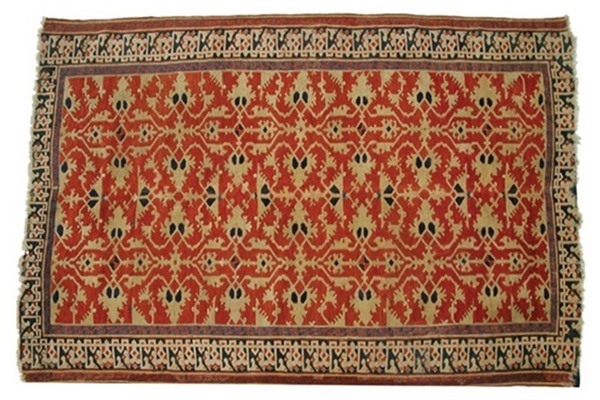
SOURCE: Rug Insider
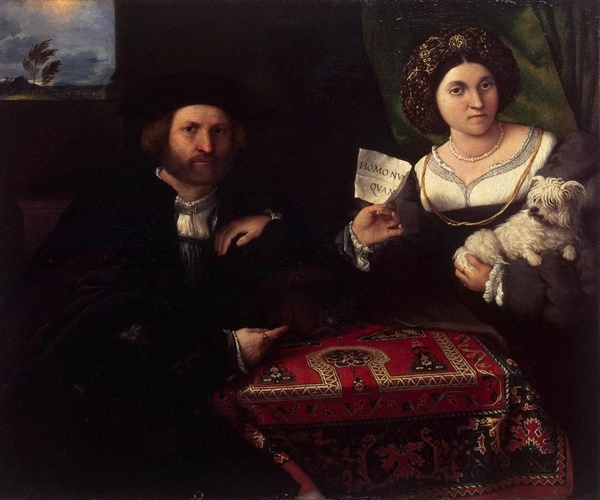
SOURCE: The Artchive
"As far back as the 15 th century, Turkish carpets woven in the Oushak (or Usak) province were prized by the European aristocracy, and began to appear regularly in some of the most revered paintings of the time, including the paintings of Hans Holbein, as well as in those of Verrochio, and other famous artists of that era."
—Rodney Hakim, Rug Insider
Soumaks
Soumaks are another type of flat-woven carpet that originated in Turkey, with roots tracing back to ancient Anatolian weaving traditions. These carpets are woven using a twill technique that creates a thick, durable fabric. Soumaks are known for their intricate designs, often including geometric motifs, stylized floral patterns, and bold color combinations. They became especially popular during the Ottoman Empire, reflecting the rich cultural and artistic heritage of the region.These carpets are prized for their durability, resilience, and artistic beauty, serving as cherished heirlooms and decorative accents in homes worldwide, symbolizing a connection to a vibrant history and tradition.
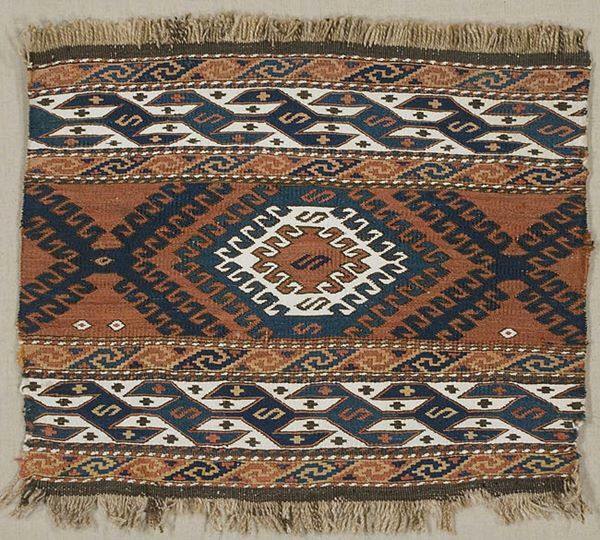
SOURCE: Marla Mallett Textiles
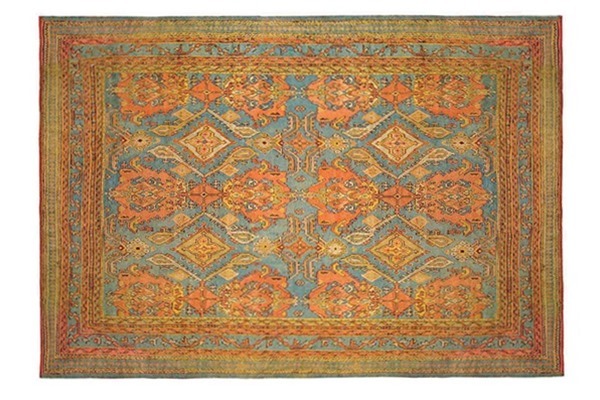
SOURCE: Rug Insider
Oushaks
Oushak carpets, also known as Ushak or Uşak carpets, hail from the town of Oushak in western Turkey. These carpets are celebrated for their soft, muted colors, spacious designs, and large-scale floral motifs. Oushak carpets were highly esteemed during the Ottoman Empire and were often used in palace settings and as diplomatic gifts. They feature a distinctive aesthetic characterized by open fields, oversized motifs, and harmonious color schemes. Oushak carpets continue to be coveted by collectors and connoisseurs for their timeless beauty and refined elegance.
Why Your Home Needs a Turkish Rug

A Turkish rug provides a host of benefits, both aesthetic and practical, including, but not limited to:
Unique designs
Even people who know little or nothing about carpeting recognize a Turkish rug when they see one. No other type of rug features the same kind of exquisite designs and stunning patterns. While we need more time or space to elaborate, each region of Turkey produces its distinctive motifs, including geometric shapes, floral motifs, intricate (and not-so-intricate) borders, and more. Many of these motifs allude to local traditions and folklore.
Unparalleled craftsmanship
There are a lot of knockoffs on the market today, but none offer the level of handmade artistry you get with a genuine Turkish rug. In a world where the virtual is an acceptable alternative to the real, this type of rug enables you to ground your decor in genuine human craftsmanship. Only the highest quality wools, silks, cotton, and dyes are used and manipulated by skilled artisans to create a furnishing that has lasting value.
Durability
If properly cared for, Turkish carpets can last centuries. This outstanding durability is a function of the care and quality of materials that go into their production. Unlike a knockoff mass-produced in a sweatshop in a who-knows-what country, Turkish rugs are an investment that is bound to maintain their value over time. Genuine antique Turkish carpeting can easily fetch $50,000 - $100,000 and more on the open market.
Aesthetic Appeal
If you want to impress your friends and neighbors, nothing is a safer bet than an authentic Turkish rug. Whether you buy yours new from a showroom in Turkey, from Paykoc Imports, or from an antique dealer, the carpet you purchase will add visual and cultural weight to any area of your home.
Final Thoughts
Genuine carpets from Turkey are a timeless example of traditional craftsmanship that will retain their value, enhance your lifestyle, and leave your friends green with envy! Paykoc Imports carries a wide array of beautifully crafted Turkish throw rugs in various shapes and styles. Pick one up today from our online shop or our Denver showroom and elevate the quality of your interior decor overnight.

 Default Currency
Default Currency



